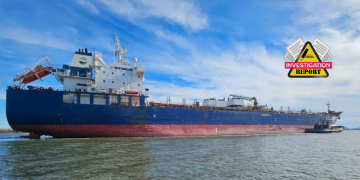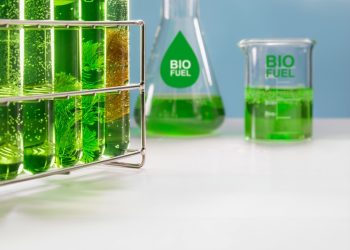DNV issues quick guide to MARPOL Annex VI, regulation 13
 In connection with the revised MARPOL Annex VI 2009 edition, DNV has experienced an increase in class enquiries related to requirements for NOx emissions from marine diesel engines.
In connection with the revised MARPOL Annex VI 2009 edition, DNV has experienced an increase in class enquiries related to requirements for NOx emissions from marine diesel engines.
New and stricter NOx emission requirements lead to new challenges related to, among other things, new technologies, the rebuilding of engines, etc. In this newsletter, we will try to clarify some of the new expressions introduced in the regulation and answer some frequently asked questions related to MARPOL Annex VI, Reg. 13.
Emission Requirements
There are three levels of allowable NOx emissions from diesel engines, depending on the vessel’s keel laying date or the engine installation date. The emission levels are called Tier I (applicable from 1 January 2000), Tier II (applicable from 1 January 2011) and Tier III (applicable from 1 January 2016, ECAs only). For more information, please see Reg. 13, parts 35.
Definition of a ‘ major conversion’
Whenever you intend to modify or replace an engine, or install an additional
one, on board a vessel, you need to evaluate whether this will influence
the EIAPP certification of the engine in question. According to Reg. 13, any
changes defined as a “major conversion” will influence the EIAPP certification.
The three scenarios below define a “major conversion”. In this context the
expression “major conversion” is related to a modification of the diesel engine only, not the vessel.
A “major conversion” means any of the following changes to a diesel engine on or after 1 January 2000:
1. Installation of a replacement engine which is not a type identical to the one it is replacing, or the installation of an additional engine.
2. The maximum continuous rating is increased by more than 10% compared
to the original certification.
3. A substantial modification is made to the engine:
– for engines installed on board ships constructed on or after 1 January
2000, this means any modification that can cause the engine to exceed
the applicable emission limit.
– for engines installed on board ships constructed before 1 January 2000,
this means any modification that increases the existing emission
characteristics. The above three scenarios will require action with respect to the engine’s EIAPP certification.
With respect to which emission requirement applies: the requirement in force at the time of the engine installation/conversion applies. The only exception is if the type of the replacement engine is identical to that of the engine it is replacing, in which case the requirements applicable to the original engine apply. In this context, “identical” may be interpreted as an engine of same
type, same model, same no. of cylinders, same equipment, same rating etc.
The year of build may differ.
This means that if you currently intend to make any changes to a diesel engine that are covered by the above definition of a “major conversion”, the Tier II requirements apply.
The above also means that the installation of a certified secondhand
engine on board a classed vessel may be challenging with respect to EIAPP
certification as an old engine will probably not be certified according to Tier II. In specific cases, we suggest contacting the engine maker for further assistance and to clarify possibilities like engine rebuilding, existing Tier II groups/families, etc.
Modification/ Rebuild of DIESEL Engine
If you plan to make any modifications to a diesel engine, you need to evaluate whether this may influence the engine’s NOx emissions and also the class scope of the engine design. In order to assist and evaluate, class must be informed and involved in the process. These modifications may be retrofits for slow steaming, NOx reducing devices, dual fuel modifications, change of NOx relevant components, etc.
For the NOx emission part, in some cases it may be necessary to do on board
measurements of NOx emissions, while other cases may be based on measurements done on similar engines and sometimes a statement from the engine manufacturer may be sufficient.
Approved Method
As defined in Reg. 13, a marine diesel engine with a power output of more than 5000 kW and a per cylinder displacement at or above 90 litres, installed on vessels constructed between 1 January 1990 and 1 January 2000, shall comply with the Tier I requirements given that a commercially available Approved Method exists. An Approved Method is a measure defined,
normally by the engine manufacturer, to ensure that the engine’s NOx emissions are within allowable limits.
It is the manager’s responsibility to clarify whether any of its engines are
covered by an existing Approved Method (AM). Up to now, there are AMs for the following engine types, MAN B&W S70MC, S60MC, S50MC and Wärtsilä RTA bores 52/58/62/72/84/96. However, not all engines of the said types are covered by the AM, since there are design and power limitations. DNV normally advises the owner to contact the engine manufacturer for clarification and further guidance since the manufacturer will have all the required details concerning the engine design and
scope of the AM.
Please see the latest DNV newsletter for all the Approved Methods currently available.
As a service, DNV is issuing retroactive requirements (RR) for those vessels in its class that have an engine installed which may be covered by an Approved Method. However, the final applicability should be determined by the manager.
Record Book of Engine Parameters
Parameters. This was originally intendedAll vessels that have installed one or more diesel engines which are required to hold an EIAPP certificate shall also have on board a Record Book of Engine to be a document in which changes to any of the NOx influencing components and engine settings were recorded. These NOx influencing components and settings are defined by the engine maker and stated in the engine’s Technical File. Typical components and settings are the fuel nozzle and pump, fuel cam, turbocharger, injection timing, etc.
However, as from the entry into force of the revised Annex VI on 1 July 2010, all exchanges of NOx influencing engine components, including regular
maintenance work and like for like replacements, shall be recorded in the Record Book of Engine Parameters. This means owners can expect an increased focus on the review of the Record Book by any party involved in the verification of the vessel’s EIAPP certification i.e. classification societies, port states and flag states.
Annex VI does not provide any guidance as to the Record Book of Engine Parameters’ format. Sometimes, the Record Book is included in the engine’s Technical File. DNV is of the opinion that the Record Book of Engine Parameters may also be an electronic document, i.e. part of the vessel’s planned maintenance system. It must be possible to extract from the system: a list of the NOx influencing components and settings, reflect any changes or comments made and the regular maintenance. The review of the Record Book of Engine Parameters is part of the IAPP periodical survey and will be conducted by surveyors. (link to previous DNV news entitled Record Book of Engine Parameters, dated 11 November 2010)
EIAPP – A Flag Ceritificate
The requirements stipulated in MARPOL Annex VI are statutory requirements
and as a consequence EIAPP certificates are issued by class on behalf of a specific flag authority. This means that if a vessel changes flag, the EIAPP certificate shall, together with the IAPP certificate, be reissued for the correct flag.
The EIAPP certificate and corresponding Technical File can be issued and approved by any party authorised by the flag to do so. This means that DNV need not be the party issuing the EIAPP certificate and approving
the Technical File for engines installed on board a DNVclassed vessel.
Sometimes we see cases where the owner wants to apply to the flag authorities for exemption from MARPOL Annex VI. DNV may be involved in this process, but the final decision in cases of exemptions or deviations from MARPOL Annex VI lies with the vessel’s flag state.
Loss of EIAPP- Relevant Documentation
All diesel engines that are required to comply with MARPOL Annex VI, Reg. 13
shall hold an original of the following documents on board at all times:
■ EIAPP certificate and Technical File or Approved Method file, as applicable
■ Record Book of Engine Parameters (original not required)
The Technical File is a document containing all the details and parameters
that may influence the engine’s NOx emissions. The Technical File reflects the
allowable adjustments to the engine and methods for on board followup.
The Approved Method File is a document that describes the scope of an Approved Method and how to perform an on board survey. If you have lost any of the on board NOxrelevant documentation, the classification society must normally be contacted.
DNV can reissue the EIAPP certificate based on the previously issued certificate. This will lead to an administration fee.
However, the engine manufacturer holds the copyright of the Technical File document, so that even if we have a copy of the Technical File we cannot distribute it. The engine manufacturer must be contacted. We know that the reissuance of a Technical File can be costly, so please take good care of this document.
Source: DNV
Definitions
EIAPP Engine International Air Pollution Prevention
ECA – Emission Control Area
NOx is a generic term for mononitrogen oxides NO and NO2 (nitric oxide and
nitrogen dioxide)



























































Is 1993 built engine need eiapp certificate